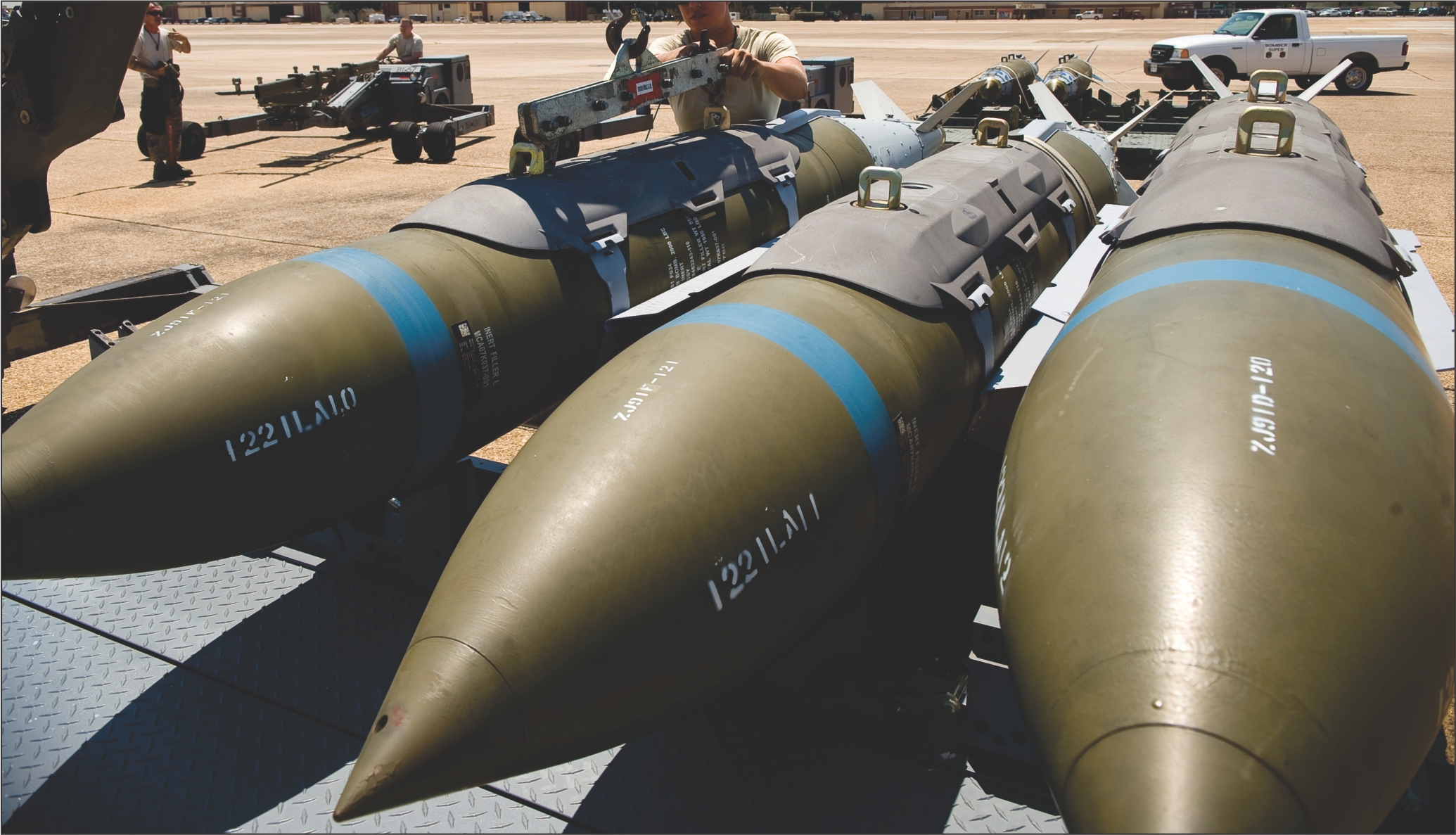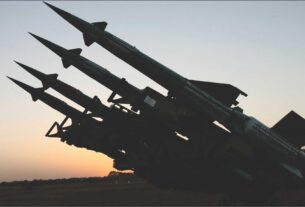Indian armed forces seriously felt the need for precision guided munitions during the Kargil conflict of 1999 during which Indian Air Force had to import Laser Guided Pods from Israel for its Mirage-2000 fighters on emergency basis. Only after the Mirage-2000s were equipped with the Laser Guided Pods, the Indian Air Force could change the course of war in the second month of combat.
The Mirages were able to devastate the Pakistani Army hideouts in the guise of the militants on the Tiger Hills and the Mantha Dhalo peaks, which resulted in heavy casualty and ultimate withdrawal of the Pakistani Army.
For the IAF the Precision Guided Munitions or the Smart Bombs would be the weapons of the first choice in future conflict. Hence the Indian Air Force has projected demands for the PGMs with the Ministry of Defence and a global Request for Proposal has already been issued for over 850 Laser Guided Bombs. Lockheed Martin, Israeli Rafael and the Raytheon have shown interest in this tender.
Relevance
Precision guided munitions have acquired more relevance in the age of continued Low Intensity Conflict in insurgency prone areas in the North Eastern part of India and also in the areas infected with terror groups in Jammu and Kashmir, to avoid collateral damage.
The successful use of drones equipped with PGMs in the Af-Pak region by the US led forces has shown the increasing importance of PGMs in the Indian context. The Army and Air Force often need to destroy the terrorist hideouts through air launched PGMs, which helps in avoiding collateral damage to civilians.
Since the Indian Army and the Air Force are engaged in fighting terror groups in the Jammu and Kashmir region, the IAF would find it extremely effective in tackling the challenge from the above, instead of direct line of sight fight by the soldiers in the area. An artillery force without PGMs can only neutralize the battlefield but not actually destroy the intended targets.
The present Indian capabilities in the precision guided ammunitions are limited to Laser Guided Bombs attached to dumb bombs. In keeping with the modern trends, though much delayed, the IAF has started upgrading its stocks of unguided bombs to this standard which has given good results. Some of the IAF fighter bombers like MiG-27, Jaguar, Su-30 MKI, Mirage-2000 and MiG-29 have been equipped to carry laser guided bombs to carry out the air to ground attack role. Indian Navy has also projected a good requirement for its on board launchers.
Meanwhile the DRDO is working fast on its short range close combat missiles from its Astra BVR missiles, which has performed several rounds of successful tests. The DRDO has also tried to convert its short range Nag anti tank missile into Helina i.e. the Helicopter launched Nag missiles with an imaging infra red (IIR) seeker. In the meantime the DRDO is also working on Indigenous Precision Guided Munitions with satellite navigation laser designation/terrain matching/optical hybrid guidance system which should begin production by 2020.
It is reported that the IAF has not funded these projects hence the project is moving at slow pace because of shortage of funds, in the DRDO units. The IAF wants to acquire the all weather precision bomb technology systems like the Enhanced Paveway-II Dual Mode GPS/Laser Guided Bombs and foreign companies have good scope of producing them in India with joint venture with Indian firms. The IAF is also reported to be in the process of acquiring over 100 bunker buster bombs.
The use of PGMs was started by the US Army in Vietnam and then extensively used by the US led forces in early nineties during the Gulf War. The US led forces actually used 20 to 30 percent of its ammunitions as PGM and later during the Afghanistan deployment and assault on Libya the percentage went beyond 90 percent.
Increasing demand
The PGMs helped in breaking the back of the Libyan forces and helped early conclusion of the war. In spite of the lessons learnt from the Gulf War the Indian armed forces ignored the need for early induction of the PGMs in its stores. Now the Indian armed forces are scouting for PGMs worldwide.
The world PGM market for the current year is expected to be over US$ 30 billion and India alone is expected to acquire PGMs worth a few billion dollars. Considering the huge backlog of other essential weapons systems, it is doubtful if the armed force would be given priority to acquire the PGMs in large numbers.
Post Kargil Indian armed forces gave special attention on acquiring the Precision Guided Munitions and the Indian military perspective plan and the Technology Perspective and capability roadmap focused on the need for acquiring the PGMs with 3 meters Circular Error Probability.
Under this plan, Indian Air Force took a major decision to equip its Jaguar fighters with the Munitions control units (MCU) for its 126 strong Jaguar fleet to enable it to fire latest precision guided munitions. The contract was awarded to the Raytheon in 2011. A year later Raytheon said in a statement that it has started procuring components required to build the MCU for Jaguar Darin II attack aircraft.
The MCU’s compact size enables it to be located in a weapons pylon or avionics bay of a legacy aircraft. From there it interfaces between smart weapons and the existing software of the legacy aircraft. MCU will give the Jaguar capability to employ smart or advanced weapons like the Maverick missile, Paveway precision guided munition and AIM-9M Sidewinder air to air missile.
As a fallout of the Kargil, the Indian Army was immediately given sanction to acquire more than 50,000 rounds of 155mm Krasnopol PGMs from Russia and it is reported that till date the Indian Army has only this PGM in its stores. The Krasnopols are the Laser Guided projectiles and are called terminally homing or Hit to Kill PGM. The BONUS shells of Bofors/ BAe systems also fall in this category.
The second category of PGM is the Sensor Fused or Shoot to kill ammunition which is similar to the Sensor Fused Munition possessed by the US Army. The third category is the “course corrected area effect warhead” like Raytheon’s GPS guided Excalibur PGM for 155mm artillery.
Besides the above categories the Israeli firm Rafael has developed the Electro Optical Homing Devices called Marigold, which does not use GPS and is based on image matching.
DRDO’s project
After the need was felt for the PGMs the DRDO took upon itself the responsibility to develop PGMs, which is now reported to be under production called Sudarshan. The DRDO laboratory Aeronautical Development Establishment (ADE) along with the Instruments Research and Development Establishment (IRDE) has worked together to develop the Indian Laser-guided bomb kit Sudarshan, which will improve the accuracy of the air to ground bombing by the Air Force. The project was initiated in 2006.
The earlier Indian bombs used to fall off 400m to one km target,but the Sudarshan kit will help the bombs drop on the target with CEP of 10 mts. The Sudarshan has a range of 9 kms and work is being done to further increase the range by using the GPS. It then is expected to rival the GBU-12 Paveway II in capabilities.
The DRDO is making frantic efforts to develop Glide Bombs for the Indian fighters which will be guided to their targets for precision attacks. This is first Indigenous program in India to boost the precision attack capability which can carry payloads of 100 kgs, 250 kgs and 500 kgs. These will use the guidance mechanism after being dropped from the aircraft.
The then DRDO chief V K Saraswat had told the media that the DRDO is developing the glide bombs which can be directed towards their intended targets using guidance mechanism from standoff distances as glide capabilities will help in enhancing the range of the bombs.
A few trials of such bombs have already been carried out by the DRDO. The DRDO is also in the advanced stage of developing the anti–radiation missile which will multiply the strike capabilities of the armed forces by destroying the enemy’s advance warning system. These missiles can be deployed on latest fighters like the Su-30 MKI. These missiles can detect a radar by tracking its electromagnetic radiation pulses, which would be independent of the radar wavelength and able to destroy it.




